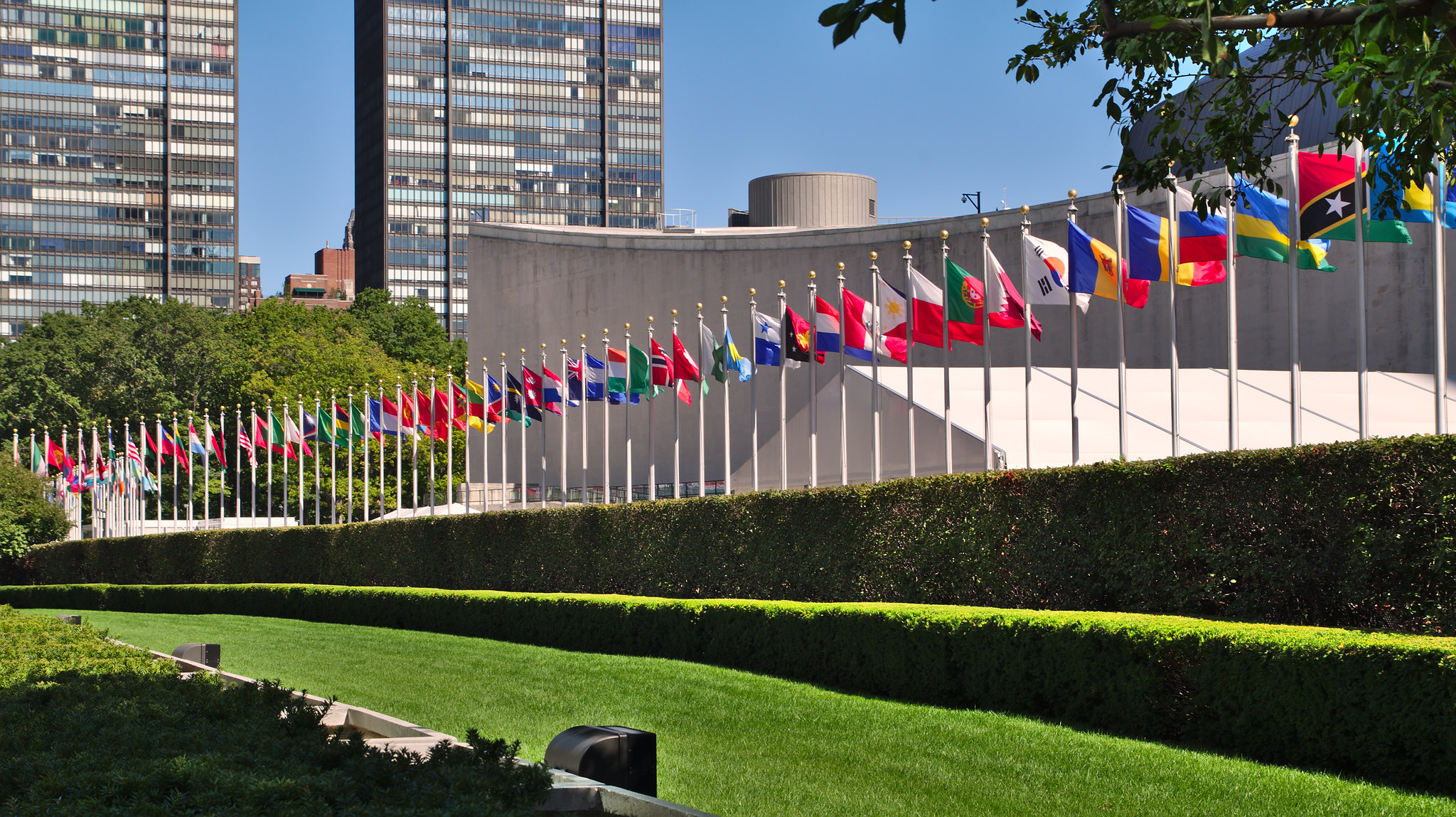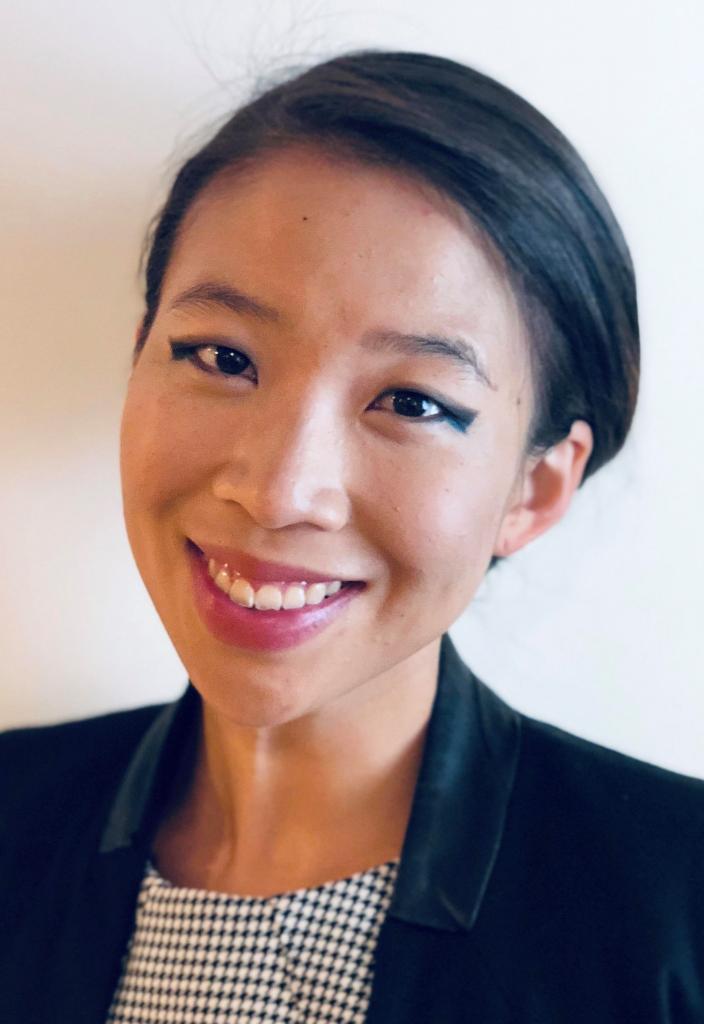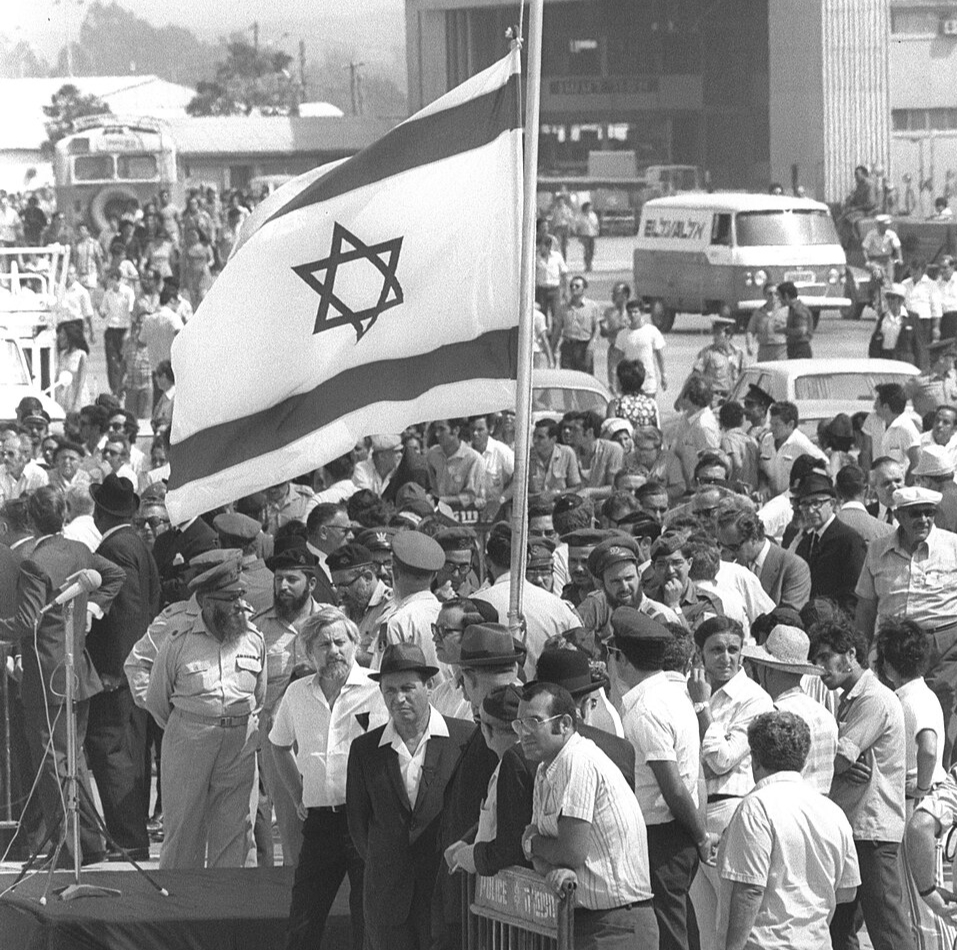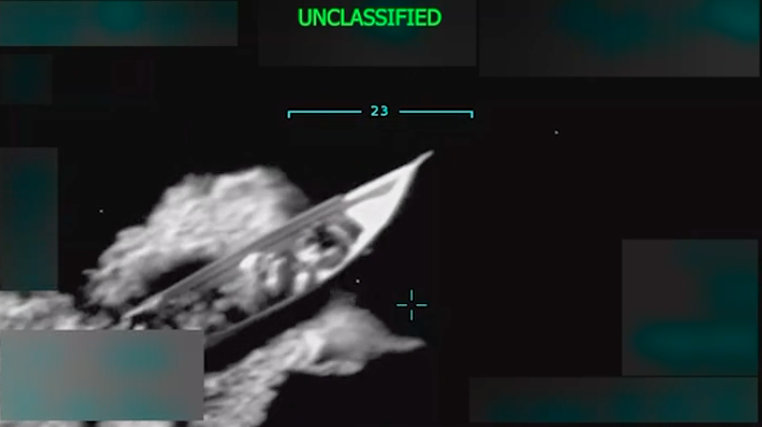The SDF’s International Humanitarian Law Obligations to Islamic State Detainees During the Coronavirus Pandemic
What are the international law obligations for the SDF and its allies to maintain conditions in prisons housing alleged Islamic State fighters?

Published by The Lawfare Institute
in Cooperation With

Between March and June, former Islamic State fighters held at Ghweran prison in the northeastern Syrian city of Hasakah rioted three times, at various points seizing control of sections of the prison. According to some media reports, the riots stemmed not only from detainees’ frustration over their long-standing legal limbo but also from dissatisfaction with overcrowded and unhygienic conditions. Concern over these conditions has only been exacerbated by the introduction of the novel coronavirus and COVID-19, the respiratory disease it causes, to the region.
The makeshift prison—formerly a school—is controlled by the U.S.-backed Syrian Democratic Forces (SDF), and holds an estimated 5,000 local and foreign fighters. Detainees are packed into cells, which themselves have only one, partially walled-off latrine. Meanwhile, the facilities are ill equipped to deal with medical issues. In 2019, scores of incoming fighters died due to lack of medical care sufficient to deal with injuries sustained during the fall of Baghouz. Today, Ghweran remains unequipped to address a suspected outbreak of tuberculosis that has killed at least two detainees and likely infected 100 others.
And the spread of COVID-19 in northeastern Syria has only cast a harsher light on these inadequate conditions. Although no cases have yet been reported among detainees at Ghweran (though at least 280 have been reported in the region), prison conditions mean that if the coronavirus is introduced to Ghweran, an outbreak will spread rapidly. This is also the case at other SDF-controlled detention facilities in the region, such as al-Shadadi prison, which houses another 2,500 former fighters. And al-Hol camp, where more than 65,000 Islamic State-affiliated family members are being detained in similarly cramped and unsanitary conditions, recently reported its first COVID-19 case.
So, it’s worth taking a closer look at the specific health-care-related obligations that international humanitarian law (IHL) imposes on the SDF, a non-state armed group (NSAG), at Ghweran in light of the pandemic.
The Current Response
Around the time of the spring riots, governmental and multinational bodies had begun sending security, medical, and personal protective equipment (PPE) to the prisons and camps in northeastern Syria. In late March, the U.S.-led coalition reported providing $1.2 million in supplies. These included latex gloves, masks, surgical kits, defibrillators, and oximeters sent to hospitals and detention facilities in the area, as well as masks, shields, and batons distributed to SDF personnel guarding Islamic State detainees. And in April, the coalition reported sending sanitizing and medical supplies to regional detention facilities, including handwashing stations, disinfecting wipes, face masks and examination gloves. (In total, the coalition reports sending throughout the spring and summer approximately $2 million in detention and security equipment, as well as PPE.)
Coalition spokesperson Col. Myles Caggins has also reiterated the U.S. military’s commitment to renovating SDF detention facilities “to help ensure that SDF can continue to detain [Islamic State] fighters securely and humanely.” This commitment included increasing funding from $10 million to $20 million for improving existing facilities and building new detention structures. And despite some pandemic-related delays to survey team site visits, the coalition reported a site visit to the Hasakah facility to observe living conditions, as well as the initiation of unspecified living condition improvements at other facilities.
Nonetheless, officials with the Syrian Democratic Council—the political wing of the SDF and de facto governing authority in the Autonomous Administration of North and East Syria—have expressed skepticism that the aid shipments would be sufficient to prepare the prisons for a potential coronavirus outbreak, or that renovation of the prisons would actually move forward. And given the scarcity of medical resources in northeastern Syria, humanitarian organizations have warned that a more widespread coronavirus outbreak in the region is likely to have a catastrophic impact. As a result, these groups have reiterated calls to expand aid access to northeastern Syria (a measure that has been made more difficult by Security Council action this year, which closed the al-Yarubiyah border crossing that had served as the main access point for humanitarian aid deliveries into the region) and to repatriate foreign fighters and their families (something most European countries have steadfastly resisted). But in the meantime, the SDF and its state allies can address some of the concerns generated by a potential outbreak by identifying and implementing the health-care-related obligations that IHL imposes on them.
The Application of International Humanitarian Law to Non-state Armed Groups in Non-international Armed Conflicts
International humanitarian law seeks to regulate the effects of armed conflict by, among other things, laying out the responsibilities of state and non-state parties engaged in conflict in order to protect individuals who are no longer participating in hostilities.
Security detainees—individuals suspected of posing an exceptional conflict-related security threat, such as the former Islamic State fighters detained at Hasakah—make up one such group of individuals, but the rules governing their treatment differ depending on the type of conflict on hand. (Relatedly, the women and children at al-Hol and other camps have alternately been classified as security detainees and displaced persons, but a discussion of the legal regime governing their camps is beyond the scope of this piece.)
International humanitarian law divides conflicts into two types. An international armed conflict between two or more states is regulated by the wide-ranging rules of IHL codified in all four Geneva Conventions and its two Additional Protocols. But a non-international armed conflict (NIAC)—which takes place between a state and an NSAG or among NSAGs—is governed by far less robust constraints. The rules for these conflicts are derived from a single provision of the Geneva Conventions (Common Article 3) as well as customary IHL—that is, the obligations that arise not from a formal written agreement but from established state practice and a sense that the practice is required as a matter of law.
Commentators generally view the conflict between the SDF and the Islamic State as a NIAC: SDF is an NSAG in an armed conflict with the Islamic State, another NSAG. Given that neither NSAG is a “High Contracting Party” to the Geneva Conventions, there is debate as to how Common Article 3 binds them. For instance, one theory posits that Common Article 3 is binding because it’s recognized as containing the baseline rules for safeguarding vital humanitarian interests.
Setting aside that debate, anyone the SDF detains in relation to its conflict with the Islamic State receives the protections provided by IHL’s rules for a NIAC as set forth in Common Article 3 and customary IHL. Although these rules are less robust than those applicable to an armed conflict between states, they still provide certain obligations with respect to detention conditions and health care.
The central source of these obligations is Common Article 3, the only provision in the Conventions that explicitly applies to all NIACs. In relevant part, this article provides:
- That each party “shall be bound to apply, as a minimum” provisions ensuring that “[p]ersons taking no active part in the hostilities, including members of armed forces who have laid down their arms and those placed hors de combat by ... detention ... shall in all circumstances be treated humanely”;
- That “[t]he wounded and sick shall be collected and cared for”; and
- That to this end, “[a]n impartial humanitarian body, such as the International Committee of the Red Cross, may offer its services to the Parties to the conflict.”
Contrast this with the Third Geneva Convention’s far more robust provisions applicable to prisoners of war in conflicts between states.
Beyond Common Article 3, commentators generally agree that customary IHL also binds NSAGs like the SDF. As noted, customary IHL is the combination of state practice and the sense of obligation that creates—separate from the formalism of state ratification—universal obligations binding on all actors to an armed conflict. Further, the increasingly active role of NSAGs in armed conflicts has led some commentators to theorize that NSAGs aren’t just passively bound by customary IHL but can, through their actions, also contribute to its development.
Here, three Red Cross Rules summarizing customary IHL are useful in filling in the gaps left by treaty text:
- First, Rule 110 provides that the sick “must receive, to the fullest extent practicable and with the least possible delay, the medical care and attention required by their condition.”
- Second, Rule 118 stipulates that “[p]ersons deprived of their liberty must be provided with adequate food, water, clothing, shelter and medical attention.” (The Red Cross also notes that international human rights law [IHRL] may provide a complementary source of guidance as to detainee treatment.)
- Third, Rule 121 provides that “persons deprived of their liberty must be held in premises ... which safeguard their health and hygiene.” The Red Cross notes in relation to Rule 121 that “Additional Protocol II requires that detainees be held in healthy and hygienic conditions” and that “poor conditions of detention may amount to inhuman treatment.”
Finally, there’s Additional Protocol II, an agreement supplementing and elaborating on Common Article 3, which sets forth more detailed responsibilities that are considered implicit in the basic duty to “collect[] and care[] for” the “wounded and sick.” But there’s one problem. Additional Protocol II applies only to NIACs taking place “in the territory of a High Contracting Party between its armed forces and dissident armed forces or other organized armed groups” with certain levels of command and control. And because Syria has not ratified it, it’s not a High Contracting Party. So, the SDF is not subject to the protocol’s rules.
Nonetheless, some provisions of Additional Protocol II are considered by international courts as declaratory of existing or crystallizing emerging customary rules (which, as discussed above, non-state armed groups are obligated to comply with). So, to the extent that its provisions are also reflected in customary IHL, Additional Protocol II offers useful guidance as to an NSAG’s health-care obligations to its detainees. For example:
- Articles 5(a)(1)(a) and 7 stipulate that wounded and sick detainees “shall be respected and protected” such that “in all circumstances they shall be treated humanely and receive, to the fullest extent practicable and with the least possible delay, the medical care and attention required by their condition.”
- Further, the same articles provide that “[t]here shall be no distinction among them founded on any grounds other than medical ones.”
- Article 5(1)(b) requires that such persons shall, “to the same extent as the local civilian population, be provided with food and drinking water and be afforded safeguards as regards health and hygiene[.]”
- Article 5(2)(d) provides for medical exams.
Finally, it’s worth noting that there’s some ambiguity in the Red Cross’s Commentary regarding the scope of these obligations. Although the Commentary provides that NSAGs are to interpret these obligations broadly to potentially include preventive measures promoting detainee health, it also notes that these obligations are proportional to an NSAG’s specific capabilities.
So, on the one hand, the Commentary to Common Article 3 observes that the obligation to collect and care for the wounded and sick “should be interpreted broadly” as providing “comprehensive protection of the wounded and sick in [NIACs]” (emphasis added). This means that purely medical treatment of a wound or disease may be insufficient to “ameliorate the condition of a wounded or sick person” “if adequate food, clothing, shelter and hygiene are not provided alongside.” And taking it one step further, “[c]aring of the sick may also entail taking preventative measures to ensure the basic health of the population, including vaccinating people against infectious diseases.” This is especially so in NIACs, which often indirectly breed conditions that “favor the spread of infectious disease” and “hamper the effective implementation of preventative medicine, such as vaccination campaigns[.]”
On the other hand, the same commentary highlights that “the obligation to care for the wounded and sick is an obligation of means” such that “[i]ts exact content depends on the specific circumstances of each case,” including the resources an NSAG has at its disposal. Therefore, “a Party that has significant medical supplies at its disposal will be required to do more than a Party that only has limited means[.]” And in this vein, the Red Cross notes that compliance with Rule 118 must take into account the means available and local conditions.
At bottom, international law clearly provides that NSAGs like the SDF are required to provide medical care to their detainees and to hold them in hygienic conditions to the best of their ability. But IHL also recognizes that, given the scarcity of resources available during a conflict, these obligations might be limited by the resources available to a non-state group.
The SDF’s Legal Obligations
Despite this ambiguity in the commentary, according to some observers it’s possible to sketch out from these IHL sources three buckets of health-care-related obligations to detained populations in NIACs: ensuring the population’s health and hygiene; meeting the population’s medical needs without discrimination based on nationality, political opinion, or other similar criteria; and permitting an impartial humanitarian organization access to the detainees should the NSAG be unable to meet these obligations.
If the SDF were to adopt the Red Cross’s view that its obligations are to be construed broadly, such obligations would most likely require measures aimed at both preventing a potential coronavirus outbreak and addressing any ongoing one. Below, I set out a representative list of obligations that could potentially fulfill the SDF’s obligations at Ghweran.
As to the first obligation—taking measures to encourage hygienic conditions conducive to detainee health, including preventing the spread of the coronavirus—the SDF should provide sanitizing supplies and expand Ghweran to facilitate social distancing, hygiene, and the isolation of contagious individuals. And this would likely include specific measures such as:
- Providing supplies that promote hygiene (including soap and water at handwashing stations) and PPE (including masks).
- Expanding Ghweran’s facilities so that cells are not overcrowded and have proper ventilation, and detainees can access the outdoors.
- Reconfiguring facilities to promote minimally hygienic conditions, including expanding access to latrines and more fully walling off restroom areas, as well as ensuring that backup water supplies are set in place so that regional water station interruptions do not disrupt handwashing.
- Screening any individuals who enter the prison for COVID-19 symptoms, and having the space to isolate any individuals who exhibit symptoms.
To carry out the second obligation—meeting the population’s medical needs, including treatment of any cases of COVID-19 that do arise—the SDF should likely:
- Have a designated clinical area that satisfies certain hygienic standards, including sufficient space, adequate sanitation, and access to potable water.
- Obtain supplies and equipment to meet the medical needs of the population, such as medication, PPE, COVID-19 tests, and ventilators.
- Require medical screening of detainees who exhibit symptoms of COVID-19, as well as isolation of contagious individuals.
Finally, should the SDF be unable to meet these implicit obligations, it should provide its consent to have an impartial humanitarian organization facilitate implementation of these measures. Although the SDF has called on the international community generally to provide additional resources to shore up detention facilities in light of the pandemic, it doesn’t appear to have specifically sought COVID-19-related assistance from such organizations. Further, the extent and nature of the access to the facilities that the SDF provides these organizations is disputed.
To recap: The SDF could comply with its health-care-related obligations under IHL by distributing PPE at and renovating Ghweran to promote hygienic conditions; facilitating its clinic’s ability to care for those who have COVID-19; and permitting humanitarian organizations access to Ghweran’s facilities.
Although these obligations may seem rudimentary, Ghweran’s inability to deal with the tuberculosis outbreak or conflict-related injuries indicates that the SDF is unable to meet its current, non-COVID-19-related obligations—and there’s no reason to think it’ll be able to meet any pandemic-related ones. The limited resources available to the SDF mean that, practically speaking, the SDF is unlikely to fulfill such obligations. And as the Syrian Democratic Council has itself acknowledged, although it’s almost entirely reliant on coalition aid shipments to prepare for potential COVID-19 cases, much of that aid so far would be insufficient to stem a widespread outbreak. Further, because the Syrian government in Damascus controls the laboratory testing of COVID-19 samples from northeast Syria, the council has reported a lag in even learning about COVID-19 cases in its region.
At the end of the day, given the dearth of resources available to it, the SDF can make the legal argument under Common Article 3—which sets out an obligation of means—that it’s not required to undertake the prophylactic measures laid out above.
The U.S.’s Legal Obligations
That doesn’t mean the SDF is stuck in an unfixable situation. If IHL does indeed impose requirements on the SDF that it is unable to meet, then states that have backed the SDF, like the U.S., arguably have a responsibility as a matter of both law and policy to enable the SDF’s compliance with IHL.
Commentators observe that there are two legal scenarios that would require the U.S.’s assistance. One view is that the U.S. maintains sufficient control over the SDF (or the SDF’s detention operations) such that the U.S. would be responsible for the detainees’ treatment under its own IHL and IHRL obligations. International courts have articulated two central tests for evaluating the level of control a state must have over an NSAG for it to be responsible. The “effective control” test essentially requires a showing that the NSAG conducted a specific operation at the direction or instruction of the state. By contrast, under the broader “overall control” test, the state must have had a role in coordinating the NSAG’s activities by providing financing, training, equipment and operational support.
And here, there’s at least a plausible argument that the U.S. exercises overall control over the SDF. For instance, the U.S. provides funds to pay for SDF guards’ stipends and training; supplies riot and security equipment; and assists with the construction or renovation of the facilities. Further, the U.S. is also responsible for providing advice and assistance to SDF personnel as to various detention functions.
A second, broader legal argument is that the U.S. has obligations under Common Article 1 of the Geneva Conventions—which asks state parties to “undertake to respect and to ensure respect” for IHL “in all circumstances”—to provide assistance in a manner that facilitates the SDF’s compliance with IHL. As the International Court of Justice has observed, this means that regardless of whether or not a contracting state “is a party to a specific conflict, [it] is under an obligation to ensure” compliance with IHL. Thus, insofar as the U.S. is aware of any unlawful detention practices by the SDF—which the current conditions arguably amount to—the U.S. must “do everything reasonably in [its] power to ensure respect” for IHL by the SDF and to end the IHL violations.
Setting aside these legal arguments, doing so would also be in the U.S.’s (and the SDF’s) policy interests. First, implementing these measures would be broadly consistent with the World Health Organization’s guidelines regarding COVID-19 in detention centers, and would go a long way toward alleviating the logistical strain that an outbreak would have on the facilities. Second—although it is unclear whether fears over an outbreak motivated the recent riots—such measures would deprive the Islamic State of another justification for encouraging an additional riot. Third, it would head off further international outcry over both facility conditions and the unresolved legal status of these detainees. Finally, it would address concerns that such detentions reflect a lack of respect for the humanitarian principles that should guide the U.S. and its non-state partners in counterterrorism operations—especially because these detentions by non-state partners are likely to recur in future counterterrorism efforts.




